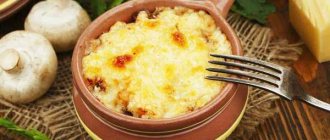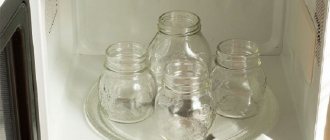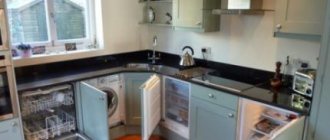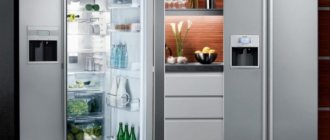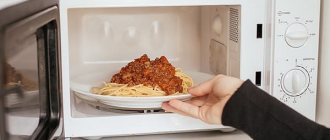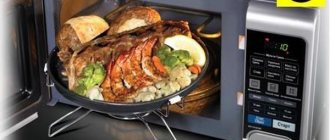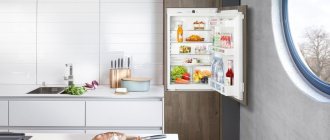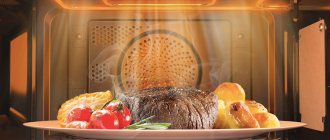What kind of cookware is suitable?
The main criterion for choosing a container that will be used for a furnace with ultrahigh frequencies is the thermal stability of the material. And if the cookware includes fire-resistant qualities, then it will be ideal for cooking.
A microwave can heat the contents inside to 100 degrees - this is the boiling point of the liquid. Heat-resistant dishes can be maintained up to 140 degrees. As for containers with fire-resistant properties, the heating temperature here can reach 300 degrees.
What dishes can be used in the microwave:
- Made from heat-resistant glass. It is not just a hardened material, it has fire-resistant qualities, making it ideal for use in UHF oven cooking. The walls of such dishes are made strong and thick, so during the cooking process the material is not subjected to excessive heating. Glassware for the microwave should not be chosen with thin walls. It will crack after the first or second use. Can glassware be placed in the microwave? Yes, but only products with thick walls.
- Made from porcelain. Almost every second piece of porcelain-based cookware can be used in the microwave. An exception may be dishes that are gilded.
- Made of ceramic coated with glaze. The dishes are used for quick heating and for preparing various foods. Ceramic microwave dishes can be used to fry eggs without oil, the result will be excellent. The only drawback will be the strong heating of the material, so do not forget to use oven mitts.
- Made from glass ceramics. This material is one of the most common. It combines the temperature resistance of glass with the beauty of ceramic cookware. All this combined gives excellent performance. This type of cookware can be used for heating and cooking food.
- From paper. Of course, such containers cannot be reused. Disposable dishes placed in the microwave are great for heating store-bought products.
- Cotton based napkins. Flour products are often wrapped in this material. Napkins help preserve the aroma of baked goods, and after heating the cake or pie will not become dry.
- Made of plastic. Contrary to frequent doubts, it is possible to heat food in plastic containers. This applies to containers. Today they are available in a wide variety - this is not the only positive side. But you can put plastic dishes in the microwave if you only need to heat up food. During the heating process, the plastic may begin to release substances that will negatively affect the products. As a result, ready-made food cannot be called healthy. The containers are ideal for microwave ovens and freezers, as they will not deform under the influence of temperature. An additional positive side of such dishes is that they are not afraid of sudden temperature changes.
- Made from heat-resistant film. This material does not melt or deteriorate under the influence of microwaves. Plastic film and transparent foil are especially popular today. They have small holes that allow steam to escape during the cooking process, and thus create a sauna effect inside the container. The materials can be used instead of a lid, and after cooking, the material will help maintain the temperature of the finished food for a long time.
- Made from silicone. This material is used for molds that are useful for baking. You can use them to make muffins, cakes and cupcakes.
Paper
Ceramic
Glass
Porcelain
Plastic
All these materials belong to the class of heat-resistant and can be heated in microwave ovens. Containers with semi-finished products deserve special attention. You can often see a mark on the packaging that the product is ready to be placed in the microwave without additional packaging.
If the food does not contain fat, water or sugar, wax paper packages can be used for heating. These wrappers are used solely for heating purposes. Paper containers are covered with a layer of wax on top, but when exposed to high temperatures, it will begin to melt and get on the food.
You will learn about additional containers made of other materials for microwaves from the table below.
| Packaging/ware | Microwave mode | Grill mode |
| Aluminum foil | It is forbidden | Can |
| Wax paper | Can | It is forbidden |
| Wooden dishes | For short heating periods | It is forbidden |
| Stone containers | Can | Can |
| Regular plastic bags | It is forbidden | It is forbidden |
| Plastic bags for cooking | You can, but you need to make holes before cooking. | It is forbidden |
| Food containers | Can be used for quick heating | It is forbidden |
Utensil shapes for microwave oven
Not only the quality of the cookware matters, but also the shape and size. It is best to cook in a container with round edges. It heats food evenly.
You can use square and rectangular dishes, but keep in mind that in the corners the food may dry out due to the high concentration of energy.
In wide and shallow dishes, food heats up and cooks faster and better.
In order to prepare some dishes, for example, soup, you need a deep dish that widens towards the top. This is necessary because when boiling, food may splash out, and the expanded edges will save you from this.
- Cylindrical-shaped utensils are great for making muffins and biscuits. But it should be higher than for the oven.
- When heating and cooking food in a microwave oven, it is recommended to use a special lid. This is necessary so that the food does not dry out. The lid also helps speed up the cooking process and makes the food much more tender.
- The lid should be labeled and transparent to allow microwaves to pass through it better. There should be a hole in it for steam to escape. The lid protects against splashes and grease on the walls of the microwave. This way the device will remain clean much longer.
Now it’s clear which dishes can be used in the microwave and which cannot. With the right selection of microwave cookware, it can last for many years. This is good for both technology and food.
Therefore, before you start using cookware in an electrical appliance, you should check the markings and make sure that it is suitable for preparing dishes.
Now you can start preparing various dishes and delight your loved ones.
Special marking
In addition to tableware, you can separately purchase special ovens designed for ultra-high frequencies. When selecting cooking equipment, do not forget to pay attention to the presence of special marks (markings). Responsible manufacturers who care about their reputation and product quality make marks, inscriptions or pictures that indicate the suitability of the dishes for use in a microwave oven. This does not apply to plastic; it is enough to have a mark on it that it is heat-resistant.
Utensils for microwave ovens are marked with the following markings:
- Microwave safe. This mark on the cookware means it is suitable for heating and cooking. If such a mark is crossed out, this indicates that the container cannot be used in microwave ovens.
- Not recommended microwave. Microwave cookware is marked to indicate that it is not recommended for use in the microwave. And vice versa, if it says recommended microwave, then the dishes are suitable for such ovens.
- PP (polypropylene or polystyrene). Be careful with this designation. The dishes cannot be used in a microwave oven. The containers are not suitable for hot foods or drinks. They can be used for storing cold food and sandwiches.
Plastic dishes
Plastic utensils are safe to use in the microwave. But such dishes must have the necessary markings. Plastic dishes are great for heating. It is not recommended to cook full meals in such dishes.
With constant exposure to microwaves, plastic has the ability to deteriorate, and it also releases harmful substances. Plastic utensils are much cheaper than other utensils, but their service life is much shorter.
Shape selection
Every housewife wants the prepared dish to be not only aromatic, but also pleasant to the taste. The result depends not only on the material, but also on how correctly the shape of the dish is chosen. In order to achieve uniform and proper heating of food, it is recommended to use cylindrical or oval-shaped plates. It is better to avoid square or rectangular containers; cooking will take a long time, and the food itself will dry out. To ensure that food heats up quickly and evenly, it is better to choose plates with low edges but a wide bottom.
Microwave ovens have long lost their status as equipment used by bachelors; these electric assistants can surprise everyone. And if you take into account the large selection of models, you can count on a huge range of tasks to be performed. The combination of a microwave and the right cookware will ensure that you forget about a regular gas stove. Please note that individual products are prepared on specific dishes, for example:
- To prepare pasta or cereals, it is better to choose containers with widened sides on top. The plates should be high enough so that the liquid does not spill out during cooking.
- Muffins, cakes, bread and pies require an oblong shape of the container and always high sides. At the time of cooking, the dough begins to rise and it is the sides that will prevent it from spilling out.
- A medium-height plate is suitable for aromatic vegetables and fruits. It should be borne in mind that these products shrink during cooking and release juice, which will evaporate.
It is not recommended to cook or heat in dishes with uneven or slanted edges, as the heating result will be uneven. A plate placed in the microwave with the wrong shape often heats up, but the food does not. Many attribute this to the quality of the equipment, but as it turns out, the problem is only in the correct selection of the form.
Is a cover necessary?
Do not heat or cook food in a microwave oven in a closed container. Due to the temperature, the contents inside may explode. Before using the microwave, be sure to remove the lid from your dish or jar. For the same reason, you cannot heat nuts or eggs in the oven; an explosion of the food inside cannot be avoided. If you need to cook sausages or tomatoes, you must first pierce them with a fork. This will allow the steam inside the food to escape.
Many kitchen appliances sold for microwave use do not include a lid. The exception is plastic containers. Microwave pottery can also be covered with a lid. If a microwave oven is used in the kitchen as the main assistant, you will have to get a lid to get a fragrant and tender dish.
You will definitely need a lid if you cook soups in a microwave oven, so that at the end of cooking you won’t find that all the liquid has evaporated.
Of course, it is not advisable to use sealed lids; it is better to choose those that are equipped with holes for steam escape. You can use transparent foil that already has holes in it.
What not to put in the microwave
If you want the food you cook in the microwave to be healthy, and your equipment to remain operational for many years, pay attention to what kind of dishes you place inside the oven. There is a list of dishes that absolutely cannot be used in microwave ovens:
- Containers with gilded designs;
- Ceramic plates without glaze;
- Thick aluminum pans designed for oven use;
- Pots, mugs and bowls made of metal;
- Thin glass plates;
- Crystal devices;
- Silumin containers.
If dishes made of silumin, as well as dishes made from glass or ceramics without glaze, are rarely found at home, then special attention should be paid to iron, crystal plates, and with gilded rims. Why can't you heat food in metal dishes? During cooking, an electrical charge may form inside the appliance, which may damage the appliance. This is the main reason why you should not put metal utensils in the microwave. This aspect also affects those dishes that have rims made of paint based on metal particles. An exception may be semi-finished products, which are packaged in containers made of very thin aluminum. Even when using dishes, before turning on the device, you need to make sure that the plate does not rub against the walls of the oven, and that the height of the product does not occupy more than two centimeters. The duration of heating of products in aluminum bowls will be longer.
If cooking will be carried out using grill or convection mode, you can also use small aluminum cookware.
Containers can only be placed at the bottom. This is especially true for models that include the ability to place products on several tiers.
You can use everyday utensils for the microwave, the most important thing is that there are no gold-plated rims or patterns on their edges. This also applies to silver finishes. This paint contains metal components that conduct electricity. Most housewives have more than once noticed the appearance of characteristic crackling sounds and electrical flashes inside the equipment. This is due to the golden rims and waves that are reflected.
Few people know that crystal should not be used. There are several reasons for this:
- If the crystal is real, it contains lead;
- Expensive crystal, in addition to lead, may include silver;
- The walls of faceted crystal containers have uneven thickness, which will lead to uneven heating.
Because of the metal, the cookware will start to heat up very quickly. As a result, the crystal salad bowl or bowl will crack. No need to experiment, take care of your crystal devices.
To determine the material used to make the dishes, you can conduct an experiment. Place a glass of water on a plate and microwave for 1 minute, setting the power to maximum. If after this time the container is cold, then the material is ideal for use in an ultrahigh frequency oven. Any product placed inside the appliance will heat up quickly, and the dish itself will not cause harm to the stove. If the container heats up after treatment with waves, this means that it absorbed all the radiation at the time of treatment. Food in such dishes will take a long time to heat up and will significantly shorten the life of the household appliance; it is better not to use it. Another important point. You cannot put the microwave into operating mode if it is empty inside. Microwaves, which should be aimed at heating, will begin to reflect from the walls of the oven, as a result, this will lead to failure of the device.
What utensils should not be used?
Regardless of the shape and material of the container, there are several options that are strictly taboo for use in microwaves:
- Metal plates and bowls . Food in such containers simply will not heat up, because... The material is resistant to microwaves. In addition, metal can cause real “fireworks” with sparks inside the device, causing the latter to malfunction.
- Containers decorated with drawings . This is especially true for saucers with gilded patterns. It is not recommended to use containers with any pattern on the outside or inside; it may contain metal particles. The consequences of violating this rule are food with a burnt taste or a broken device. It is better to pay attention to this option: form MR11142-43.
- Crystal . Beautiful salad bowls should be saved for decorating a festive feast. Such plates have a non-uniform structure, which interferes with the proper operation of the microwave unit. Another disadvantage: crystal utensils contain lead, silver - metals that lead to damage to the device.
- Disposable containers . Plastic without special markings (a symbol with a picture of a microwave) will simply “melt” inside the device; the cardboard, in turn, will become covered with soot, which will negatively affect the taste and appearance of the food inside such a vessel.
You may be interested in: Oven cookware: 8 types of kitchen containers
Before putting the dish in the microwave, you need to carefully inspect the bowl for chips or cracks. All these defects can not only lead to damage to the container, but also to malfunction of the kitchen device itself.
Another nuance - the food in the container should not be tightly closed with a lid or wrapped in film. Be sure to make holes through which steam can escape without problems. Otherwise, you can wait for a real local explosion inside the device.

